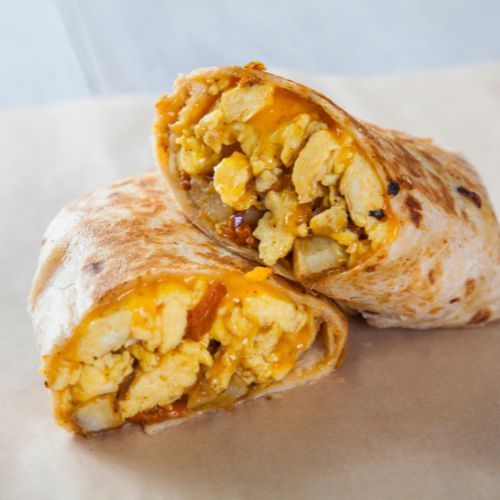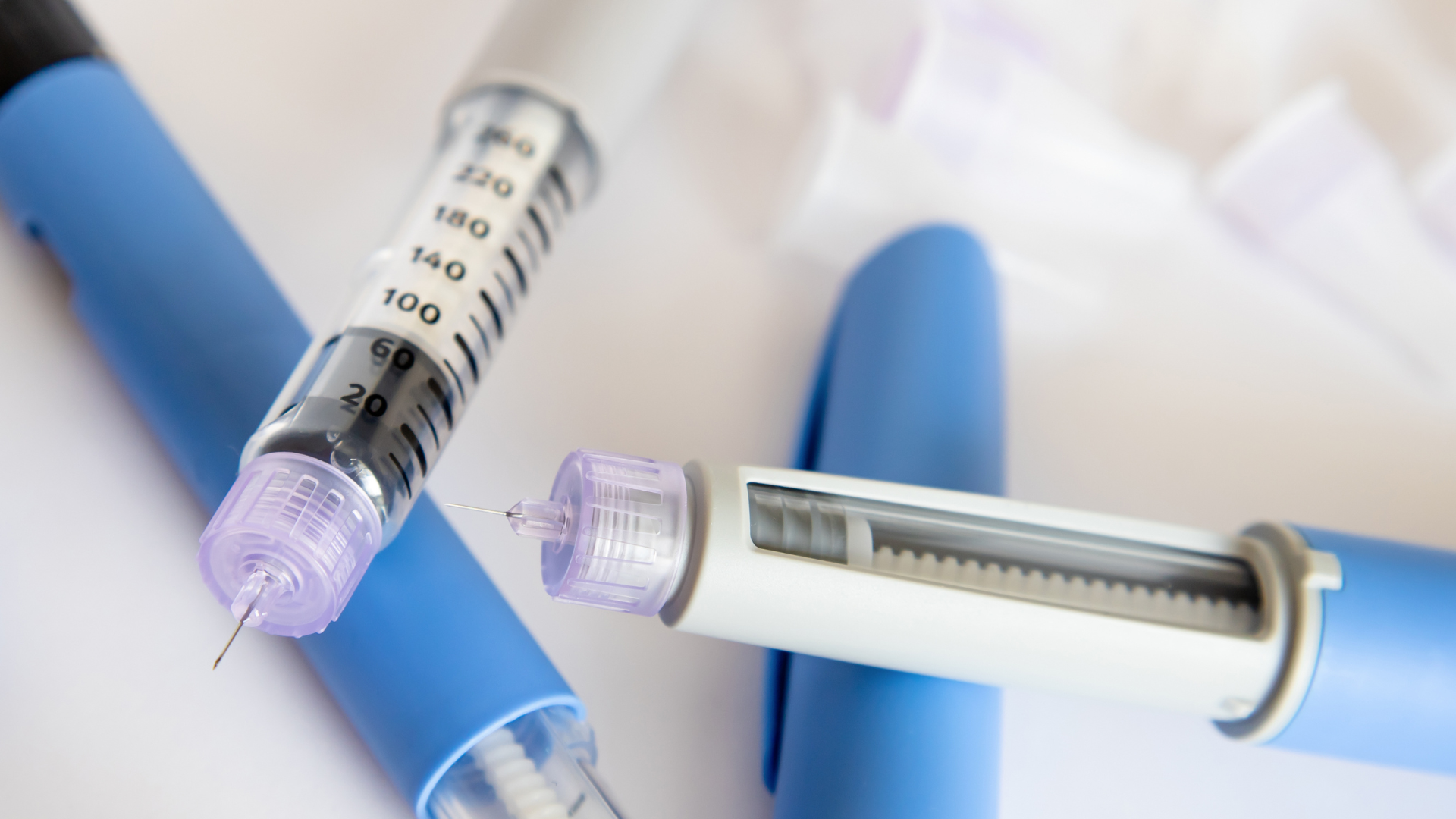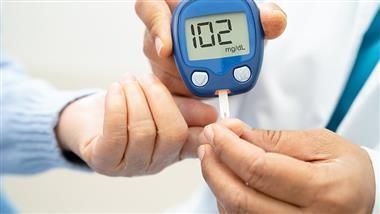Diabetes Fast Food Guide: What to Order at McDonald’s
Ever wondered how to survive the drive-thru with diabetes? In our new series, a dietitian and diabetes educator walks through the best things to order at top fast food chains, starting with the Golden Arches.
If you’ve ever found yourself in the drive-thru lane trying to option for something healthier, fear not: There are actually quick drive-thru meal options that won’t compromise your carb budget or sacrifice your health.
Whether you're craving a juicy burger, a fresh sandwich, a customizable burrito bowl, or a caffeinated pick-me-up, we’ve got you covered. In this series, we’ll offer some practical tips for dining in general. We’ll also review the menus of popular drive-thru destinations such as McDonald's, Burger King, Subway, Wendy's, Chipotle, Starbucks, and Taco Bell, and present you with healthier, dietitian-approved options at each of these restaurants.
5 general tips for selecting diabetes-friendly fast food
1. Plan before you go.
Remember to look for hidden carbs. "Carbohydrate sources often overlooked are found in breaded proteins like baked or fried chicken and fish; veggie patties, salad dressings, and dips," said Sue-Ellen Anderson-Haynes, a registered dietitian and diabetes educator with the Academy of Nutrition and Dietetics. She suggested looking up the nutrition information on a phone or the restaurant's website before going out and planning accordingly.
To provide satiety and prevent blood sugar spikes, Megan Warnke, a registered dietitian and certified diabetes care and education specialist (CDCES) who lives with type 1 diabetes, looks for menu items that contain carbs, protein, and fiber. "This usually means choosing something with veggies if possible as it's pretty easy to find carbs and protein on any menu item," Warnke noted.
2. Don’t supersize!
To maximize your time in range, in general diaTribe suggests aiming for 100-150 g total carbohydrates per day with 30 g of carbs per meal or snack. If possible, it’s best to work with a registered dietitian or certified diabetes care and education specialist to personalize a plan and provide you with expert guidance for better glucose levels.
In addition to the amount of carbohydrates, it is important to consider the other nutritional content of each item. For example, most fast food has a significant amount of fat and sodium. Smaller portions will reduce your overall carbohydrate, fat, sodium, and caloric intake. For this reason, order the smallest size available, such as sandwiches, burgers, and side dishes from the kid's menu. Keep in mind that the American Diabetes Association recommends people with diabetes have no more than 2300 mg sodium daily.
3. Read nutrition labels on any condiments and toppings.
It’s a good practice to skim the nutrition facts first if you use salad dressings and sauces.
"Most fast-food restaurants have individually wrapped dressings that indicate the nutrition information. If unavailable, you can always use only half the packet or container," Anderson-Haynes said.
Swap out mayo-based sauces, cheeses, bacon, and sour cream for healthier options such as mustard, vinegar-based dressings, nuts, seeds, and avocado. When eating Mexican food, opt for green salsa over tomato-based salsas, which are twice as high in sodium.
4. Be mindful of beverages.
When ordering sugar-free drinks, always double-check to ensure that they are sugar-free. "There have been a couple of instances where I was served a regular Sprite and didn't realize it until my CGM had two arrows pointing straight up. Now I always double-check right away with my server that it is indeed a diet," Warnke said.
5. Consider insulin needs, if applicable.
Eating high-fat foods such as burgers, steak, and mac and cheese are known to cause a delayed rise in blood sugars several hours after eating. The delay happens because fat slows down the rate at which food leaves the stomach.
Warnke uses an extended bolus to help keep her blood sugars steady when eating high-fat, fast food. "It's not always a perfect science, but giving about 60% of my bolus right before eating and 40% over the next 3-4 hours tends to keep my blood sugar steady," she said.
Top diabetes-friendly McDonald's menu items
Let's dive into the McDonald's menu and explore the healthier options you can select while still enjoying the convenience of their drive-thru.
For a low(er)-carb breakfast: Sausage burrito
For breakfast, New Jersey-based registered dietitian Patricia Kolesa suggests a sausage burrito. "The sausage burrito has one of the lower amounts of carbohydrates [25g] on the breakfast menu," Kolesa said.
Sausage burrito: 310 calories, 25g carbohydrates, 1g fiber, 2g sugar, 1g added sugars, 13g protein, 17g fat, 800 mg sodium

To keep you full all morning: Oatmeal
Nevertheless, when it comes to making a healthy choice, the oatmeal without diced apple slices or cranberry raisin blend, despite being 43 grams in carbs, can still be a sensible choice. "Oatmeal has the highest amount of fiber on the menu, ringing in at 4g or 13% of the daily value," says Kolesa, who explains that fiber can slow carbohydrate digestion and help manage blood sugar levels. If you're eyeing the oatmeal but are worried about a post-meal blood glucose spike, you may want to consider consuming less than a full serving.
Oatmeal (without diced apple, light cream, or cranberry raisin blend): 210 calories, 43g carbohydrate, 4g fiber, 15g sugar, 5g protein, 140 mg sodium
For a morning food-and-drink pairing: Egg McMuffin sandwich and a small cappuccino
New York-based registered dietitians Tammy Lakatos Shames and Lyssie Lakatos, known as The Nutrition Twins, advise skipping breakfasts with combo platters with hotcakes or English muffins. "Many of these meals contain more calories than some small females need in their entire day,” Lakatos said, pointing out that 155 grams of carbohydrates is more than five times the carbs some people with diabetes should consume at a meal. Instead, she recommends the Egg McMuffin sandwich with a small cappuccino.
Egg McMuffin sandwich: 310 calories, 30g carbohydrate, 2g fiber, 3g sugar, 1g added sugars, 17g protein, 13g fat, 770 mg sodium
Small cappuccino: 110 calories, 10g carbohydrates, 0 g fiber, 8g sugar, 0g added sugars, 6g protein, 5g fat, 75 mg sodium
The best burger pick: Classic hamburger with mustard
Shames recommends the Classic Hamburger with 250 calories and 31 grams of carbs for lunch: “The Classic Hamburger contains 12 grams of protein, so if you decide to eat the bun, the protein, as well as the fat in the burger, will help prevent blood sugar from spiking [as much].” She suggests ditching half the bun or eliminating it altogether if blood sugar control is a concern with the refined flour in the bun.
"Skip any of the bigger hamburgers," Lakatos advised. "It means more sauce, more ketchup, and more of everything that adds more carbs. Plus, more meat means more calories and more saturated fat, which isn't good for anyone, especially people with diabetes who are already at increased risk for heart disease."
Also, be mindful when it comes to sauces and dressings. The mustard sauce has 0 carbohydrates, but sauces such as barbecue sauce, sweet & sour sauce, and honey can have up to 11g of carbohydrates. The good news is McDonalds offers almost all their condiments on the side. "This can be helpful when monitoring the amount of condiments added to your meals while also adding flavor to your foods to make them more satisfying," Kolesa said.

Classic hamburger: 250 calories, 31g carbohydrate, 1g fiber, 5g added sugars, 12g protein, 9g fat, 510 mg sodium
Mustard packet: 0 calories, 0g carbohydrates, 0g fiber, 0g sugars, 0g protein, 0g fat, 70 mg sodium

A sensible side: Apple slices
When it comes to sides, apple slices are your best bet. "With only 15 calories and 4 grams of carbs that come with antioxidants, there's really no better side on the menu!" Shames said.
Apple slices: 15 calories, 4g carbohydrate, 0g fiber, 3g sugar, 0g protein, 0g fat, 0 mg sodium
To drink: Unsweetened fountain iced tea
Quench your thirst with unsweetened iced tea. "This is a dream come true for anyone watching their blood sugar. There are no calories or carbs, yet it has antioxidants that help improve health,” Lakatos said. “You can drink it limitlessly without fear of it negatively impacting your blood sugar. Just be sure not to add sugar."
Medium unsweetened iced tea: 0 calories, 0g carbohydrate, 0g Fiber, 0g sugar, 1g protein, 0g fat, 15 mg sodium

For dessert: Chocolate chip cookie

According to Shames, the chocolate chip cookie is lower in carbs than any other dessert on the menu. "With 170 calories and 22g of carbs, this dessert is far below most of the other treats when it comes to both calories and carbs. To really step it up a notch and slash the carbs to 11g, split the cookie with a friend," Shames said.
Skip fruity-sounding desserts like the Strawberry Shake."It may sound a bit healthier, especially with strawberry in its name, but don't be fooled,” Shames cautioned. “At 850 calories per serving (that's more than half the calories that many people need in an entire day!) and 143 grams of sugar (nearly 150 grams of carbohydrates), it's a far cry from a strawberry or anything lighter than a cookie."
Chocolate chip cookie: 170 calories, 22g carbohydrate, 1g fiber, 15g sugar, 2g protein, 8g fat, 95 mg sodium
If tacos, burritos, and other Mexican go-tos are in your regular meal rotation, then tune in for the next edition of our diabetes fast food guide, which will highlight healthful options at Chipotle Mexican Grill.
Healthy Bites















